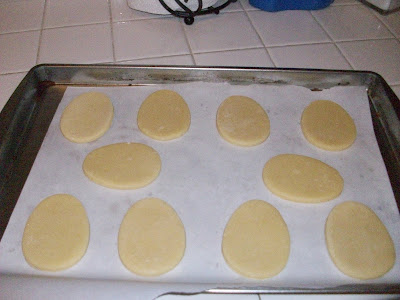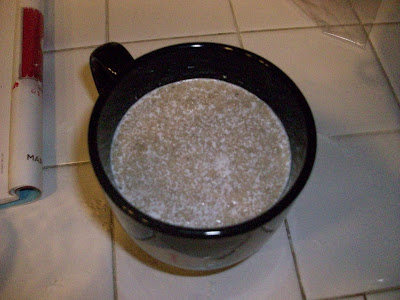Okay, well, not my Grandma, but everyone I talk to says their grandmas made beautiful Danish. And it's so easy! Anyone can do it. The finished product is soft, sweet, and delicious.
First you have to make the dough.
Start this recipe by combining 1/4 c (2 oz) slightly warm water with 5 t (1/2 oz) active dry yeast. Set aside.

In the bowl of a standing mixer equipped with a paddle attachment, combine one stick (4 oz) unsalted butter,1/2 c + 1 T (4 oz) sugar, 1 1/2 t (1/4 oz) salt, and 1/2 c (1 oz) non-fat dry milk solids. Mix until well combined, but NOT until light and fluffy. Just give it a quick mix to make sure everything is evenly disbursed.

Then, add 2 large (3 oz) eggs in increments.

Add 3/4 c (6 oz) of water slowly. Mix briefly, just until the water is absorbed. The dough will be watery.

(And this, dear readers, is when my camera promptly died. So I'll make the dough again soon and take more pictures for you.)
Gradually add in the yeast mixture. It should have almost doubled in volume and be nice and bubbly. Now add in 2 3/4 c (1 lb) bread flour and 3/4 c (4 oz) cake flour. Don't worry if the flour doesn't absorb right away, it will. Once all the flour is absorbed, mix for 4 minutes on medium speed of your mixer. You will have a nice, smooth dough. Roll it into a ball and place it in a well-oiled bowl. Cover with a towel and place in a warm area for 1 1/2 hours.
When the dough is ready roll it out on a well-floured surface. Now you can cut it into squares or strips and make Danish.


























